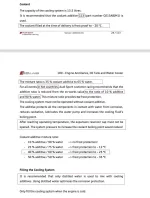There was a group of SHO modifiers that tested fairly extensively, they claimed it slightly lowered temps.
they had the standard battery of tests done and discussed with 3rd third party - hardly gospel.
It may indeed have many more miscibility, or other issues than the label suggests (certainly wouldnt be the first time)
Curious to see what may be new.
they had the standard battery of tests done and discussed with 3rd third party - hardly gospel.
It may indeed have many more miscibility, or other issues than the label suggests (certainly wouldnt be the first time)
Curious to see what may be new.
Last edited:

